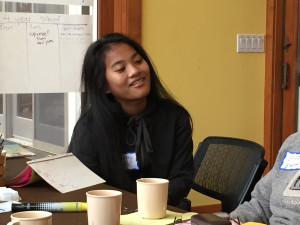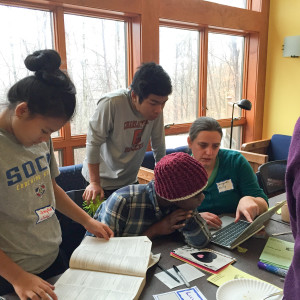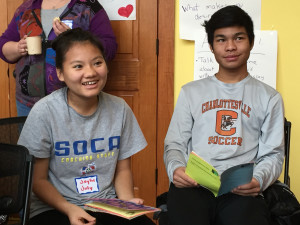Unlike the other Albemarle County schools I’ve visited thus far, you don’t “just happen” to drive by Sutherland Middle School– you purposefully have to turn off 29 North and drive blocks through residential neighborhoods. There isn’t even a marker for Sutherland on 29 North. You just have to know it is there.
I was last in Sutherland 11 years ago when I co-led a computer gaming camp that formed part of the research for my dissertation. Sutherland still presents as a new school, even though it just celebrated its 20th year. It shares a property with Hollymead, and feels like a well-contained block; the central parking lot is flanked by the two schools and playing fields.
Unlike Murray, well-entrenched in the city, and the rural schools I’ve visited, most children walk or ride their bikes to Sutherland. The middle school draws on the developments of Hollymead and Forest Lakes South which have their own streets with limited access to throughways. Sutherland is one of the more affluent middle schools in the county with about 17% of students receiving free or reduced lunch. Sutherland has a thriving before and after school community with students arriving early to attend a supervised study hall from 8:15 to 9:00, and free after-school clubs four days a week, until around 6pm. With so many students walking or biking, late day transportation is not a barrier.
Walking the halls of Sutherland, Principal Vrhovac showed off the murals that were painted by students, the band room, and the “Shark Tank” a Maker space room housed between two traditional classrooms. There are 2 additional rooms dedicated to Maker activities, including carpentry tools, video cameras, 3D printers, and a green screen. Although hearing the newest educational buzzwords, “Maker Spaces” and “STEAM” drives me a bit crazy, I am grateful that the connection between the digital and physical worlds is being made more obvious and relevant to young learners. For many years “technology”-infusion simply meant that computers were being purchased.
When asked what his priorities for the next few years were, Principal Vrhovac, who just completed his first year at Sutherland, answered that making sure that underserved populations– racial and ethnic minorities and low-income students– are getting appropriate services, and that the achievement gap for those groups is reduced. There was plenty of evidence that high achievers are thriving at Sutherland; I am very glad to hear that underserved students have an advocate in their principal.
Category Archives: K12
Murray High School
Murray High School is housed in the building that was once Rose Hill Elementary. I was very familiar with the outside grounds, as I often played on the playgrounds that were there when I was a child. Inside, Murray has a comfortable scale, with soothing colors, punctuated with skilled student artwork decorating surfaces. This is the kind of school I would like to attend:, cozy, with the personalities of the students woven into the very walls. Unconditional love at Murray is $0.00, a sign proclaims.
Murray still labors under the sometimes perception that it is a suspension or disciplinary school, a problem compounded by history and place. Albemarle’s past alternative schools did have students “encouraged” to attend by administrations that were at a loss on how to teach them in their larger schools, and Murray shares a campus with the Enterprise School, which “provides specialized short term intervention to students requiring alternative placement for educational rehabilitation”.
The reality is, which I know well as both a student and an educator, there are simply students who don’t thrive in larger schools. And by “don’t thrive”, I mean they cannot muddle through with the regular teenage ennui and challenges. I know many adults who reflect back on their high school experience, and say things like “It was okay, I enjoyed this teacher and that class, and overall it wasn’t bad.” For some students, high school in a large facility, with hierarchical structures, social pressures, and economical, emotional, and/or developmental challenges, can be absolutely horrible.
Murray follows Choice Theory, and is a Glasser Quality Public High School. Students perform A and B quality work, and do not receive grades until that quality of work is attained. If students do not care for given assignments, they must work with the teacher to propose and complete an equivalent assignment. Students complete personalized annual Quality Work projects, examples of which include a 45-page essay on Hamlet, a rebuild of a Harley Davidson motorcycle (by a female student), and a complete CD of music, including cover art and digitization. Projects like these require that students build partnerships with collaborators, and develop the technical and soft skills needed to complete a long-term project. Students identify the ways in which their projects align with the county’s 21st century life long learner skills.
Moving to the Murray physical plant next year will be the Community Public Charter School, a middle school with an arts-and-literacy-based program, also following the Choice Theory model. I know two alum of CPCS and know that they love the hands on, active and small-sized program.
Murray also shares space with Central Office, two large rooms have been designated to be used for professional development because there is no other space in the County’s building. Initially that surprised me, since there are two County Office buildings, and then I recalled the difficulty I have had trying to reserve a room on a given day. Even with all the buildings the county owns, it seems that space is still a premium.
Walton
The last time that I was inside Walton was 1988 as I graduated from middle school. In the intervening years, I’ve driven past it many times. Walton sits remote on a small rise, with parking lots creating a buffer between the rural road and the school. While it’s surrounded by our Piedmont rolling hills, the closely mown grounds, athletic fields and parking lot make Walton feel in the country, but not of the country.
Inside, Walton has been modernized since my days of attendance — glass panels instead of the vinyl folding doors of my youth, and a bright, well-lit library. As the school was getting renovated in the summer months, Principal Dwier-Selden and I had a spirited conversation about a wide range of topics while seated in the amphitheater.
I love middle schoolers and their itchy-scratchy ways. Eleven to thirteen-year-olds are learning to be independent, developing social bonds outside of their immediate family and are capable of understanding more sophisticated concepts. Some of the perceptions and realities of middle schoolers can translate into challenges for a school. Parents may expect, and therefore inadvertently, encourage negative social behaviors. Parents may not feel as connected to the middle school as they did to the children’s elementary, particularly if their children are pushing them away as the young people assert their independence.
In addition, Walton deals with a large geographic district– students come from just outside of Charlottesville, on Avon St Ext all the way to the southernmost parts of the county near Esmont and Nelson County. Accompanying the geographic distance, there are cultural ones as well. Similar to the situation on the western side of the county, there are rural families who have generational ties to their homesteads, and families newer to the area who have settled in the developments that are part of the urban ring.
Walton, like the other middle schools in the district, does not have an afterschool program. From my time at Computers4Kids, I know that time and transportation are major barriers for students living outside of the city ring to have out-of-school activities. Many students do not get home from Walton until 5pm; their parents may not get home until 5:30 or later, and the costs in gas and time to return to town to take part in extracurricular activities are prohibitive.
Principal Dwier-Selden spoke of challenges in getting volunteers, particularly UVa students, to make the trip to tutor or mentor students. The round-trip travel time from Charlottesville to Walton is 40-60 minutes or more depending on where in Charlottesville you are.
I was struck by the energy and enthusiasm of Principal Dwier-Selden, and the students and staff at the school. Initiatives in the works include Friday night get-togethers where students can use the school for play, socializing and community-building. Parents with interest in robotics or other hands on activities will be invited to lead students in exploration– increasing exposure, but also building community within the school. Students already operate a morning coffee cart for the teachers, and manage the money and sales.
The day I was at Walton there were students taking part in summer school. They were happily building benches out of two-by-fours at the entrance. As I exchanged farewells with Principal Dwier-Selden, a young man came up to affectionately greet her with a quick hug. As I was introduced to him, he gave me a greeting squeeze. I was reminded how much middle schoolers still crave the attention and affection of their elders, even as they strive to establish their own young adult identities. That this young man felt comfortable greeting his principal and her guest in this way, indicated that he feels trust and safety in Walton and its administration.
Visiting Alb Co Schools: Crozet and Brownsville
On July 7, 2015, I began my tour of the 26 public schools of Albemarle County. I visited the two elementary schools serving the westernmost part of the county, Crozet and Brownsville. As I drove through Crozet, I was struck by how the small town seemed both familiar and un. The streets still narrow sometimes, but the new library stands solid near widened streets with planted medians. It’s lovely, and homey.
Driving past “downtown”, past Crozet Pizza, the scenery turns residential, pastoral and mountainous in quick succession. On the left is the historic Crozet School now housing the private Field School. Across the road, to the right, is the modern cinder block and brick Crozet Elementary.
Crozet Elementary was built to reflect Jeffersonian architecture, but in a modern cast. The first sight as you enter is a round room housing the library; the gym and cafeteria anchor the two opposing ends of the front hall. The classrooms wrap in an arch around these two large rooms, with a breezeway separating the library from the two-story classroom arc. Kindergarten-Grade 2 are downstairs, and 3rd through 5th are housed upstairs. From the outside, the window treatments of the classroom arc looks like a modernist take on the the Pavilions on the University’s Lawn.
The grounds of Crozet Elementary were my favorite part of the physical plant. The back of the school seems to stretch into rural infinity, with no discernable view of houses or development. There’s a native garden created by a class of 2nd graders 4 years ago, a tennis court funded by local foundations, the ever-present well-used soccer field (I remember when the now-ubiquitous soccer seemed an exotic sport), and a baseball field. There are white-painted gourds for bird nests, and a butterfly garden.
Principal Crummie and I talked about the particular challenges for Crozet Elementary. Albemarle County is often represented by images of wealth and privilege, but at Crozet 30% of students receive free or reduced lunch. There is often an achievement gap between students coming to Kindergarten having had plenty of socialization and educational opportunities, and students who are just beginning to recognize written letters. We discussed at length the need for the working class and working poor students to have access to high quality out-of-school activities, and the challenges that transportation– especially in more remote areas– can create.
About 5 miles away sits the solid 1960’s construction of Brownsville. I attended Western Albemarle across the road for 4 years, so was familiar with the building, but had never been inside. The typical cinder block construction had been warmed up by wooden “wainscotting” throughout the school. While Crozet seemed large, but reasonable to me, with about 300 students, Brownsville seemed huge at more than 700 students. Touring schools in the summer is always a little unfair– all the desks are shoved into corners, as floors are waxed and cleaned and walls painted, but both schools are bright and cheerful with sturdy, child-friendly furnishings.
Brownsville uses regions of the state as ways to help students navigate the halls. A new addition that houses K-1 blends well with the older construction, and the 50 year old main structure has aged well. There’s plenty of flexible instructional space, including an older gym that now houses the music department, an outdoor amphitheater, and a oddly-shaped interior nook that has become a flexible technology space.
For Brownsville, rapid growth from a country school to an outpost of wealthy suburbia has been challenging at times. Principal India Haun spoke of a supportive PTO that supports afterschool programs that enroll upwards of 300 students each session. Challenges include a school day that ends at 2:20, supported by an at-capacity 120 seat county-sponsored afterschool program that runs until 6pm. A priority of Principal Haun’s is to continue to maintain an average class size of 19-22. While that number is low relative to other systems, I completely understand her priority. Anyone who scoffs that a few additional children can’t make much of a difference, should be promptly left in a room with 25 ten-year-olds.
I don’t spend a great deal of time in the area west of 250 in Albemarle County. I certainly am shocked when I drive out that way, and see new subdivisions and shopping centers dotting the previously rural area. Visiting these schools I thought about the tensions that growth like this can engender. Brownsville’s enrollment has increased hugely in the past 5 years. 15% of their students are eligible for free or reduced lunch, and those families tend to live in the mountainous Afton area. I would assume that the number of families in need has remained the same, but as the population of the school has grown the relative proportion of disadvantaged students has decreased. For these disadvantaged students, the need remains the same, but the profile of a school can look different, and priorities can change.
Both principals were sensitive to the needs of all of their students, and very interested in creating opportunities for success for students of all backgrounds. I came away thinking about the need for high-quality, affordable after-school care and transportation, and how important it is to build communities that bring together both newcomers and established families in a way that values the perspectives of both.
BE Accomplished: 6 months of Building Experiences
I began an experiment about 6 months ago. I decided that I wanted to work with young people. I decided that I wanted to do it in ways that felt genuine to me. I decided that I wanted to interact with the young people as a mentor, friend, and unabashedly myself.
I surrounded myself with friends who share similar values and who are also creating the world they want to exist in. We are working to create an inclusive and supportive community for our young members. We made some mistakes, but mostly it’s been joyous and fun. It doesn’t fit into our normal non-profit paradigm. Thankfully.
Scroll down to read quotes from students, see some raw data, and some lessons learned.
Comments from BE Youth Members
Community dinners are special to me because I get to meet new people, learn about their jobs and what they do. It’s fun and you learn about other people and you get to know them.
–H.P. CHS Junior
You were helpful because you were keeping us on track and you were there to help us go through personal and school related problems… you actually directed some of us to go talk to our professors and advisors…and you never ever for once give up on any of us…some of the time when we push other people away they will stop coming but you were always there.
–F.O. PVCC student
Ms. Dolly spent her whole morning helping me edit my research paper that was due within couple of hours. I hate to admit it, but I usually do my work last minute. I hadn’t started on my research paper that was assigned on the first day of classes, until few hours before it was due. I got a B though. I don’t think I can ever forget the all-nighters I spent fretting, and how with the help of Ms. Dolly I got a B. We were not expecting that at all, but we were both happy.
–D.U. GMU student
Being a part of BE gives me the chance to help others understand that being a mother is not the end of the road.
–M.H. Certified Nurse Associate, and Pharmacy Tech
Having someone to give you honest advice about college and other things really makes a big difference. I’m blessed to have so many wonderful people like you in my life who I can turn to, ask advice about certain things and can be sure that I’m getting a honest answer.
–M.A. VCU student
You put smile in my face, make me think about my future. Ask me what’s going to be next step, every Monday and it feel neat to be asked. I am thankful for that.
–B.O. PVCC student
You were a means of support for me personally and academically. You are always there showing me the way and the steps I need to take to get there. I know I can come to you for help regarding anything, and I appreciate that you are always there to help and listen.
–G.N. PVCC student
Summary of Services
Building Experiences has worked with 35 students this fall. All services are free to students, and to date; all work has been done on a volunteer basis. Our income has been $1705 cash donations, and about $785 in in-kind donations. Expenditures have equaled $1,440.53. Please donate to support our work.
- We have shared meals with 68 community members, including 26 youth members in the months of December and January.
- BE held 10 check in sessions at PVCC and reached 23 students, including a core group of 11 students who sought BE out each week. Topics of discussion included transferring to 4 year schools, dealing with financial aid, improving relationships with parents, peers and professors, and how to balance school and work.
- BE has provided help to 10 students with editing papers, college essays, resumes and/or cover letters, sometimes even at the last minute.
- BE has hosted 5 special events since August. We’ve enjoyed EpiCroqueTournament, a long distance, mixed terrain croquet game, held a “Tool Day” where we built birdhouses and carved in stone with a dremel tool, constructed natural wreaths, and attended a multi-day Youth Conference featuring bookbinding, knitting, car-care, college prep and a falcon(!). We celebrated the MLK Jr. weekend by having a delightful walking tour of local, downtown businesses. 17 students have participated in these special programs.
Lessons Learned/Guiding Principles
This has been a glorious experiment, with no end in sight.
- Reject the “rules” I’ve been instructed in my professional life to establish boundaries, keep my distance, be equitable and fair. And yes, in many ways these are sensible, protective measures. But they are so limiting. There are young people who need hugs, young people who need money, young people who need rides, young people who need to be told what is up. I think many of the rules put into our institutions are based upon fear. I reject that fear.
- Play the long game Fiscal and academic years lull us into measuring progress with met outcomes and completed classes, but ultimately we’re raising people. People who need to know their stories, understand their strengths, and have a network of supporters. Sometimes there are issues that can’t be resolved in one month, one semester, or one year. There are so many people that we can gain inspiration from who kept persevering. We must give ourselves permission to slow the pace of our aspirations, and honor those who work towards goals years in the making.
- Don’t let shiny gadgets distract you from the true magic I wanted to be famous. I wanted to be an old school professor. I wanted to be an avant garde artiste type with shaped hair. I wanted to be a thought leader. What I love to be now is a connector of people, someone who helps dreams come true, people become their best selves. Occasionally I get offers or suggestions that divert me from that passion. Fame, prestige flickers enticingly. And then I remember that that is false promise, and what makes me happiest is knowing that I made one of these young people see and realize their potential. Finally I have found the focus that eluded this jack of all trades for so many decades.
Thank you to BE’s Partners, Volunteers, Donors
Blue Moon Diner
Frazier Family Foundation
The Local Restaurant
Virginia Organizing
Gibson’s Grocery
Camp Holiday Trails
Whole Foods
Denise Interchangeable Knitting and Crochet
Peggy Harrison
Sammy Kaplan
Vu Nguyen
EcoVillage Charlottesville
Mudhouse
Hedge
Cha Cha’s
Frozen Motion Glass
Taiwan Garden
Join our over 50 individual donors, volunteers, and supporters, Give Today.
Building Experiences Steering Committee is
Laura Galgano, Ellen Krag, Mia Logan, Davina Fournier and Marissa Turner-Harris.
Dolly Joseph is the Chief Facilitator.
What are we going to do about college expense?
Dear Langston,
From beyond the grave, can you revamp your poem? Can you tell me about a dream half-attained? A dream that is invested in, quasi-delivered, and then sabotaged?
In the past few weeks, I’ve had 4 students tell me these stories of heartbreak:
- 3 semesters of Criminal Justice at ODU, 1 semester of PVCC. $26,000 dollars of debt. ODU won’t release transcripts, won’t allow 1st generation, immigrant student to register. Student is treading water, taking classes at PVCC that probably won’t transfer.
- 3 semesters of Social Work at VSU. 1st generation high school graduate/college student has dropped out partly because of money, partly because fears that the school won’t maintain accreditation.
- 2 semesters at VCU. Another 1st generation college student receives bill for $6,000 for this semester. Her CHS teacher writes a personal check for $3,000. Student returns for spring semester, not knowing how to get the remaining $3,000 before the end of term.
- 5 semesters in North Carolina. 3.4 GPA. There’s no more money for this semester. This junior is taking classes at PVCC. As an upperclassman, what can she possibly take that is helping her complete her degree?
Our system is broken. These 4 African American students have done what they are supposed to do. They’ve gotten good grades. They’ve stayed out of trouble. They’ve done what our schools have told them to do. They’ve followed the American Dream of pursuing their education. And now they’re returning home. Without degrees. Enslaved to a debt that will not be released by anything except their death.
We let them down. We’ve sold them a false bill of goods. We’ve failed them.
Here’s what I know:
- In the past weeks, I’ve talked to every college professor, every financial aid officer, and every scholarship manager that I could get hold of. None of them have had any hope of a solution for these students. Well, kinda one:
- I will be writing ODU a polite, but embarrassing, letter threatening to expose that they billed a student $5,000 for housing for a semester he didn’t attend. He’ll still owe $21,000, but I suppose that’s a start.
- All of these students were encouraged (some required) to apply to multiple 4-year colleges.
- All of these students, and their families, were unprepared to deal with the financial shenanigans of the schools and the federal government.
- If I were in their shoes, I wouldn’t have a clue how to proceed. And I spent 10 years prostrate to the higher mind.
- This is not their fault. This is not only their problem. This is OUR problem.
Here’s how to be horrible:
- Push kids through a K-12 system that doesn’t adequately prepare them,
- Stigmatize them if they don’t go to college,
- Tell them the only way to get out of the ghettos we’ve created is to go off to college,
- Have them sign notes for thousands of dollars, that’s not quite enough to cover all expenses,
- Create an unhelpful bureaucracy that penalizes for any slip up (in fact seems to be facilitating slip ups),
- Blame them when they are not successful,
- Accept that they’ll be making minimum wage in the service industry.
What are we going to do about this? Some suggestions:
- Develop a relationship with, and advocate for, a particular student,
- Demand more funding for state universities,
- Destigmatize attending community college,
- Demand tuition decreases,
- Stop degree inflation (does every job really require a master’s degree?),
- Stage national student and instructor walk-outs,
- Take education seriously as a human right
- Question who does it serve to keep our youth (particularly our youth of color) uneducated and broke.
Building Experiences Youth Conference 2015
This past weekend we had an amazing time at the first ever BE Youth Conference. Over 3 days 11 youth and 15 adults, one baby and one falcon came together to:
- Make pizza
- Bind books
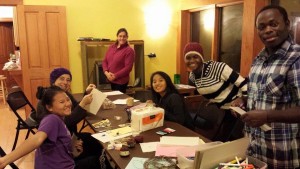
- Design a personalized flag
- Set goals and expectations
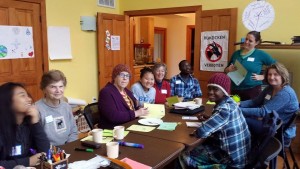
- Discuss college and career
-
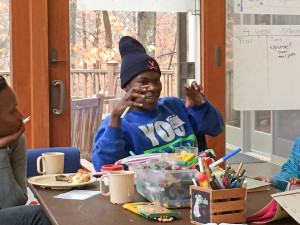
With Permission from Peggy Harrison
- Share life stories
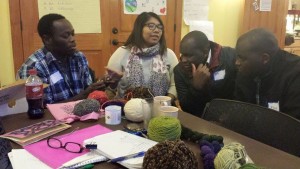
- Explore available scholarships
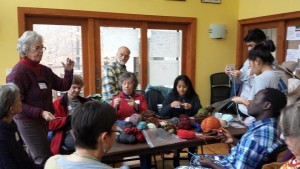





- Learn to knit and crochet
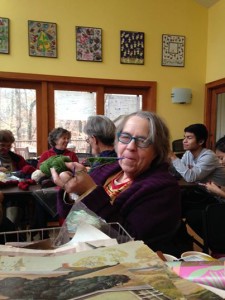
- Begin saving for the new year
- Learn about car maintenance
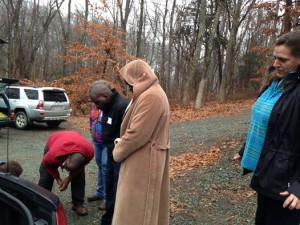
- Share meals
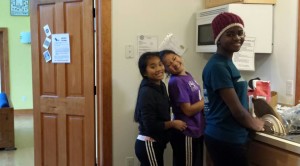
- Hold a falcon
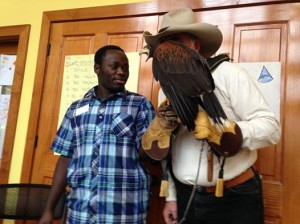
- Meet new friends
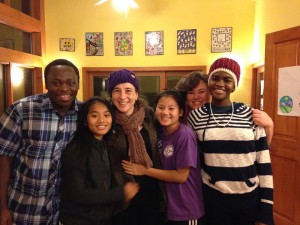
- Share cleaning responsibilities
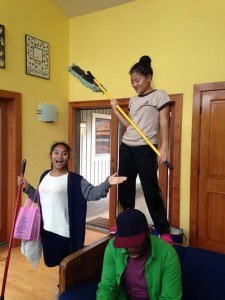
- Hug and Laugh
It was magical.
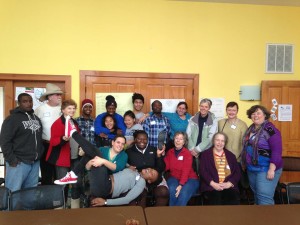
Thank you to Peggy Harrison for sharing her photographs.
A Week (+ 1) In Pictures
When my brain is too full of words to process, I must resort to pictures. This week has been so amazingly full, inspiring and life-affirming, I haven’t even been able to begin filing it appropriately. Enjoy these pictures of so many amazing people!
Best Practices: Flee
Last week I did something that felt revolutionary, dangerous and bold.
I walked out of an academic conference. Continue reading
College Essay, How I Love Thee
Ugh, college essay time! Right? Wrong. I love the process of writing the college essay. The college essay serves lots of purposes. It can explain away a period of poor grades. It can personalize all the numbers. It can provide context for afterschool activities. Most importantly, though, it is the student’s story, as told by and understood by the student.
Writing a college essay can allow students to see themselves differently, to recast their stories, to gain confidence and to feel entitled (in the best way) for the educational opportunities they are pursuing. Grade school has become such a disparate series of parts, that it can be hard for a young student to understand the process and his or her role in it. Oftentimes, the students I work with have experienced some sort of failure or aren’t as competitive as their peers. The college essay allows them to explain the circumstances, and to highlight how they excelled even in the face of adversity.
What’s a string of Bs and Cs in general level classes in the face of the struggles I see? The stories of students I work with are complex, and sometimes heartbreaking. A 20 year-old mother who was impregnated by rape at 13, and is raising the baby, alone, and in a foreign country. A daughter who cried as her father was dragged out of their home and shot dead. A boy who has been responsible for paying for his school supplies and clothes since he was 13 because his family needs any available money for food. A young woman who is the product of generations of rape. A young man who fled his home place because his father was kidnapped and held for ransom. You could meet these students 100 times and never know these things about them because they present as strong, and resilient. And they are strong and resilient, or they wouldn’t have survived.
But their grades are so-so, or their SAT scores are just average, or they haven’t done enough extra-curricular activities to be competitive. The college essay can contextualize that so-so high school performance and demonstrate that that performance, given the pressures, the obstacles, the hardships that were faced, was in fact exemplary, and outstanding, and that young person asking for more education and more opportunity would be an asset to the college.
When young people write their own stories, through the process of the college essay, they can see themselves as worthy, as hard-working, as heroes of their own stories. In turn, they enter a new part of their lives having a sense of their journey knowing that they have already overcome so much, and the challenges of succeeding in school are not insurmountable.







